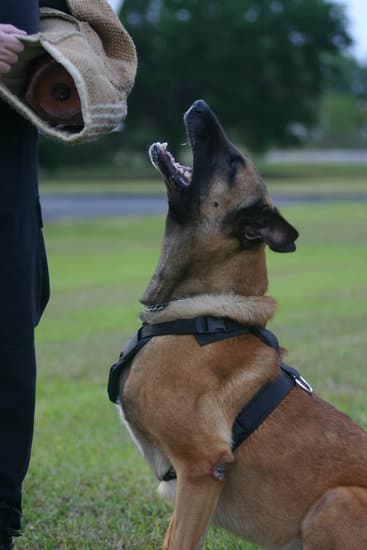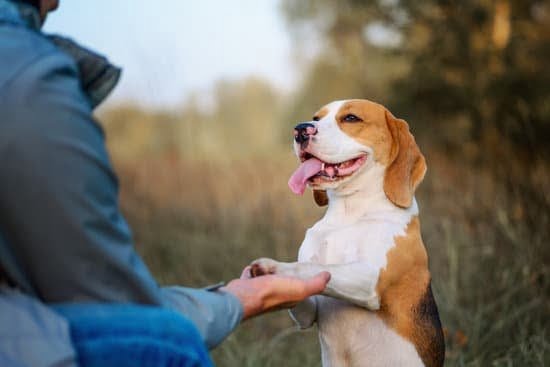Many dog owners may wonder how to train a house dog to stay outside, considering the benefits of outdoor living for their pet. This article will provide valuable insights into the importance of this training and offer a comprehensive guide to successfully transitioning your beloved canine companion to an outdoor lifestyle.
Before embarking on the training process, it is crucial to assess your dog’s suitability for outdoor living. Factors such as breed, age, health, and temperament must be carefully considered to ensure that outdoor training is a safe and comfortable option for your furry friend. Additionally, creating a secure and inviting outdoor space is essential in setting the stage for successful training and acclimation.
Consistency is key when it comes to establishing a routine for outdoor training. Dogs thrive on predictability and structure, so it’s important to maintain a consistent schedule and approach throughout the training process. Positive reinforcement techniques can also play a pivotal role in encouraging the desired behavior, making the training experience enjoyable for both you and your pooch.
Assessing the Dog’s Suitability for Outdoor Living
Before embarking on the training process, it is important to assess whether your house dog is suitable for outdoor living. Not all dogs are well-equipped to spend extended periods of time outside, and some may struggle with the transition. Here are some factors to consider before starting the training process:
1. Breed and size: Certain dog breeds are better suited for outdoor living due to their natural characteristics and coat types. Consider the breed and size of your dog when determining whether they are suitable for outdoor living.
2. Temperament: Take into account your dog’s temperament and behavior. Some dogs may thrive in an outdoor environment, while others may struggle with anxiety or loneliness.
3. Health and age: The health and age of your dog also play a crucial role in determining their suitability for outdoor living. Older dogs or those with health issues may find it more challenging to adapt to life outside.
Once you have carefully assessed these factors, you will be better equipped to make an informed decision about whether your house dog is ready for outdoor training. It is important to prioritize your dog’s well-being and comfort throughout this process.
It is worth noting that some dogs may require more time, patience, and specialized training techniques in order to successfully transition to an outdoor lifestyle. Keep these factors in mind as you move forward with the training process on how to train a house dog stay outside.
Overall, assessing your dog’s suitability for outdoor living is a crucial step in ensuring their comfort and well-being. By carefully considering these factors before beginning the training process, you can set both yourself and your furry friend up for success in transitioning to outdoor living.
Creating a Safe and Comfortable Outdoor Space for the Dog
When training a house dog to stay outside, it is crucial to create a safe and comfortable outdoor space for them. First and foremost, it’s important to ensure that the outdoor area is secure and escape-proof. This may involve installing a sturdy fence or providing an enclosed kennel or dog run. Additionally, it’s essential to remove any potential hazards from the area, such as toxic plants, sharp objects, or small items that the dog could ingest.
In addition to safety considerations, it’s also important to make the outdoor space comfortable for the dog. This can be achieved by providing adequate shelter from the elements, such as a doghouse or covered area where they can seek protection from sun, rain, and wind. It’s also important to provide access to fresh water at all times and consider adding bedding or padding for the dog to rest on.
Another aspect of creating a comfortable outdoor environment for the dog is ensuring that they have plenty of mental and physical stimulation. This can be accomplished by providing toys, interactive games, and opportunities for exercise in the form of walks or playtime in the yard. For dogs that enjoy digging or exploring, providing a designated digging area or sandbox can also help fulfill their natural instincts while preventing damage to the rest of the yard.
By setting up a safe and comfortable outdoor environment for your house dog, you are laying the foundation for successful outdoor training. Taking these steps will not only ensure your dog’s well-being but also contribute to a positive training experience as you work towards acclimating them to spending more time outside.
Establishing a Routine
One important aspect of establishing a routine is to set specific times for feeding, exercise, and potty breaks. This helps regulate your dog’s biological functions and allows them to anticipate when certain activities will occur. For example, taking your dog outside at the same time every morning for their bathroom break can help prevent accidents indoors and reinforce the behavior of going outside.
In addition to daily activities, it’s essential to incorporate training sessions into your routine. This can include practicing commands such as “stay” or “settle” while outside, as well as desensitization exercises to help your dog become comfortable with outdoor stimuli. By integrating training into their daily schedule, you are providing regular opportunities for learning and reinforcement.
| Establishing Routine | Consistency in Training |
|---|---|
| Regulate feeding, exercise, and potty breaks | Create stability and predictability |
| Incorporate training sessions into the daily schedule | Provide regular opportunities for learning and reinforcement |
Positive Reinforcement Training Techniques
When it comes to training a house dog to stay outside, positive reinforcement is one of the most effective methods. This technique involves rewarding your dog for exhibiting the desired behavior, in this case, staying outside. By using rewards such as treats, praise, and playtime, you can encourage your dog to enjoy spending time in the outdoor environment.
To begin training your dog to stay outside using positive reinforcement, start by associating the outdoor space with positive experiences. For example, every time your dog willingly goes outside and stays for a few minutes, provide a treat or offer verbal praise. This will help your dog understand that staying outside leads to positive outcomes.
Consistency is key when using positive reinforcement techniques. Make sure to reward your dog every time they display the desired behavior of staying outside. However, be cautious not to over-reward or give treats too frequently as this can lead to dependency on treats rather than enjoying the outdoor environment.
It’s important to keep in mind that each dog responds differently to rewards. Some dogs may prefer food treats while others may respond better to verbal praise or playtime. Understanding what motivates your individual dog will help you tailor your training approach accordingly.
| Technique | Details |
|---|---|
| Positive Reinforcement | Rewarding the desired behavior with treats, praise and playtime |
| Consistency | Consistently rewarding the dog for staying outside without over-rewarding |
| Customization | Understanding what motivates your individual dog for effective training |
Overcoming Challenges
Training a house dog to stay outside can come with its challenges, especially when dealing with separation anxiety and other obstacles. It’s important to address these issues in a sensitive and patient manner to ensure the success of the outdoor training process. Here are some tips on how to overcome these challenges:
1. Gradual transition: If your dog is experiencing separation anxiety when being left outside, it’s important to gradually acclimate them to spending time alone. Start by leaving them outside for short periods, then gradually increase the duration as they become more comfortable.
2. Creating a comforting environment: Make sure the outdoor space is equipped with everything your dog needs to feel safe and comfortable. This could include a cozy shelter, toys, and familiar scents from inside the house.
3. Positive reinforcement: Use positive reinforcement techniques to encourage your dog to feel at ease outside. Reward them with treats and praise when they exhibit calm behavior, and avoid reinforcing anxious behavior with attention.
4. Addressing obstacles: If your dog is struggling with certain aspects of outdoor living, such as loud noises or unfamiliar animals, work on desensitizing them through gradual exposure and positive reinforcement.
By addressing separation anxiety and other obstacles with patience and understanding, you can help your house dog successfully transition to spending more time outside in a safe and comfortable manner. Consistency in training and providing a nurturing environment will be key in ensuring that your dog becomes content with outdoor living.
Monitoring and Adjusting
Tracking Progress and Behavior
As you continue the training process, it’s important to closely monitor your dog’s behavior and progress. Keep a journal or log of your dog’s outdoor habits, noting any improvements or setbacks. Look for patterns in behavior and identify any specific triggers that may be causing issues. This will help you make informed decisions about the necessary adjustments to the training plan.
Seeking Professional Guidance
If you’re encountering difficulties in training your house dog to stay outside, don’t hesitate to seek professional help. A certified dog trainer can provide valuable insight and guidance on how to address specific challenges. They can also offer personalized strategies tailored to your dog’s individual needs, ultimately leading to a more successful training experience.
Adapting Training Techniques
Not all dogs respond the same way to training techniques, so be prepared to adapt and modify your approach as needed. For example, if positive reinforcement alone isn’t yielding the desired results, consider incorporating other methods such as desensitization or counter-conditioning. It’s important to remain patient and flexible throughout the process, making changes as necessary to support your dog’s progress in learning how to thrive outdoors.
By carefully monitoring your dog’s behavior, seeking professional assistance when needed, and adapting training techniques as necessary, you can fine-tune the outdoor training process for optimal results. This ongoing attention and adjustment will be essential for helping your house dog successfully transition to spending more time outside while ensuring their well-being and happiness.
Transitioning to Outdoor Living
Start Slowly
When transitioning a house dog to spending more time outside, it’s important to start slowly. Begin by increasing the amount of time your dog spends outdoors gradually. You can start with short periods and gradually increase the duration as your dog becomes more comfortable with staying outside. This will help prevent any feelings of isolation or anxiety that your dog may experience when left alone outside for extended periods of time.
Provide Stimulation and Entertainment
To ensure that your dog is happy and content spending time outside, it’s essential to provide them with stimulation and entertainment. Make sure there are plenty of toys, chews, and activities available for your dog in their outdoor space. This can help keep them mentally engaged and prevent boredom, which can lead to behavior problems such as digging or excessive barking.
Monitor Your Dog’s Behavior
As you continue to acclimate your house dog to spending more time outside, it’s crucial to closely monitor their behavior. Watch for signs of distress or discomfort, as well as any potential issues such as aggression towards passersby or excessive barking. By keeping an eye on your dog’s behavior during the transition process, you can address any issues that arise promptly and make adjustments as needed.
By taking these steps and being patient, you can successfully transition your house dog to spending more time outside while ensuring they are safe, comfortable, and happy in their outdoor environment. Remember that training a house dog to stay outside requires patience, consistency, and positive reinforcement techniques for the best results.
Conclusion
In conclusion, training a house dog to stay outside is a process that requires patience, dedication, and consistency. By following the steps outlined in this article, pet owners can successfully acclimate their dogs to outdoor living while ensuring their safety and comfort.
It’s important to remember that each dog is unique, and the training process may vary based on individual characteristics and behavior. However, with positive reinforcement techniques and a carefully designed outdoor environment, most dogs can learn to enjoy spending time outside.
Successfully training a house dog to stay outside not only benefits the pet but also the pet owner. Owners can enjoy a cleaner home, reduced indoor wear-and-tear, and less overall stress when the dog is happy spending time in its outdoor space. Additionally, a well-trained outdoor house dog can experience increased mental stimulation and physical activity, leading to overall improved health and well-being.
As with any training process, it’s essential for pet owners to remain patient and consistent throughout the transition to outdoor living. Even after successfully acclimating the dog to staying outside for extended periods of time, it’s crucial for owners to continue monitoring the situation and making adjustments as needed.
Remember that every dog’s journey is different, so be sure to tailor your approach based on your own pet’s needs and behavior patterns. Ultimately, with dedication and compassion, pet owners can celebrate success in training their house dogs to stay outside while enjoying all of the associated benefits.
Frequently Asked Questions
Can an Indoor Dog Become an Outdoor Dog?
It is possible for an indoor dog to transition to being an outdoor dog, but it requires time and patience. Start by gradually introducing them to the outdoors and providing a safe and comfortable environment.
How Do I Train My Dog to Stay Outside Alone?
Training a dog to stay outside alone starts with basic obedience training. Teach them commands like “stay” and “come” and gradually increase the duration of time they spend outside alone, always ensuring their safety and well-being.
Can House Dogs Stay Outside?
While some house dogs can stay outside for short periods, it is not recommended for extended periods of time. Dogs are social animals and require companionship, so leaving them outside for too long can lead to loneliness and behavioral issues.

Welcome to the blog! I am a professional dog trainer and have been working with dogs for many years. In this blog, I will be discussing various topics related to dog training, including tips, tricks, and advice. I hope you find this information helpful and informative. Thanks for reading!





